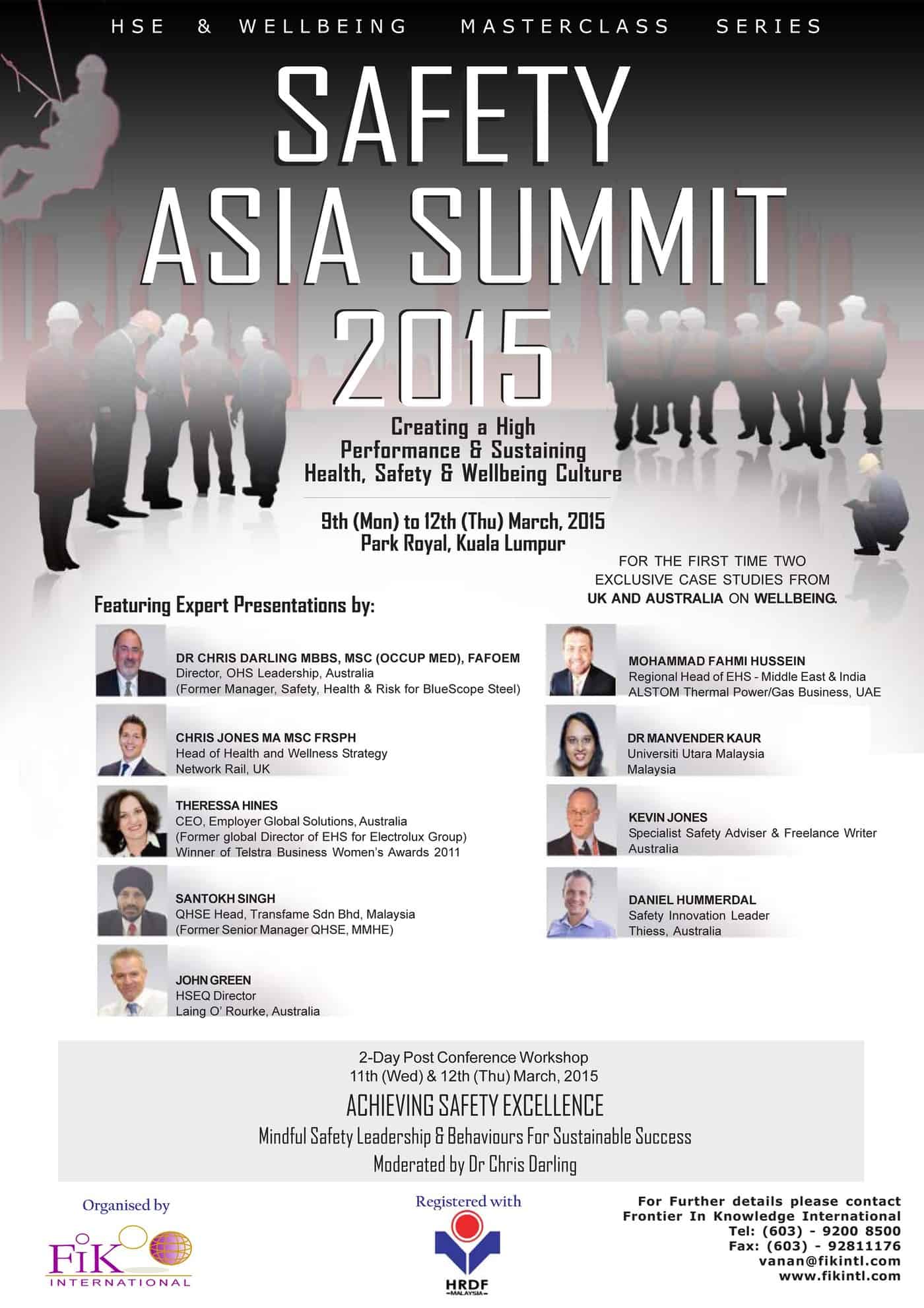 I have been invited to speak at the Safety Asia Summit in Kuala Lumpur in March 2015. My presentation will focus on safety communications. My blurb in the conference program lists the following points:
I have been invited to speak at the Safety Asia Summit in Kuala Lumpur in March 2015. My presentation will focus on safety communications. My blurb in the conference program lists the following points:
- “Ways of Seeing” – the importance of John Berger’s work
- The importance of language in the reframing of Safety
- Writing about safety as a professional development tool
- Safety leadership and classical literature
- Embracing the importance of stories
I am in the midst of finalising my presentation and would welcome any input or stories from SafetyAtWorkBlog readers to assist me. Use the link below to contact me directly.

 A quick online search reveals a plethora of advice and information about choosing the right mood-altering paint colours for office walls and selecting the best beanbags for worksite chill-out spaces. Not to mention the availability of on-site massages to ease employee tension and anxiety.
A quick online search reveals a plethora of advice and information about choosing the right mood-altering paint colours for office walls and selecting the best beanbags for worksite chill-out spaces. Not to mention the availability of on-site massages to ease employee tension and anxiety.